In this blog, you will learn about portable GPR concrete scanners from someone that has used many of the models mentioned and in a variety of situations as a professional utility locator for clearance scans to building as built checks and utility locating.
Portable GPR Scanner Guide
In this comprehensive guide, we will dive into the world of ground penetrating radar, explore what they can detect, and provide you with the knowledge you need to choose the best handheld GPR scanner for your needs.
Are you looking to buy a GPR for concrete scanning or embedded objects in depths less then 30cm/300mm/11inchs?
Look no further than handheld, portable, or mini GPR scanners.
What is a Handheld/Portable/Mini GPR Scanner?
Simply put, A GPR is a non destructive way to see metal targets or any changes in no ferrous mediums, by transmitting a signal and receiving that signal to an antenna to see change in a electromagnetic signal.
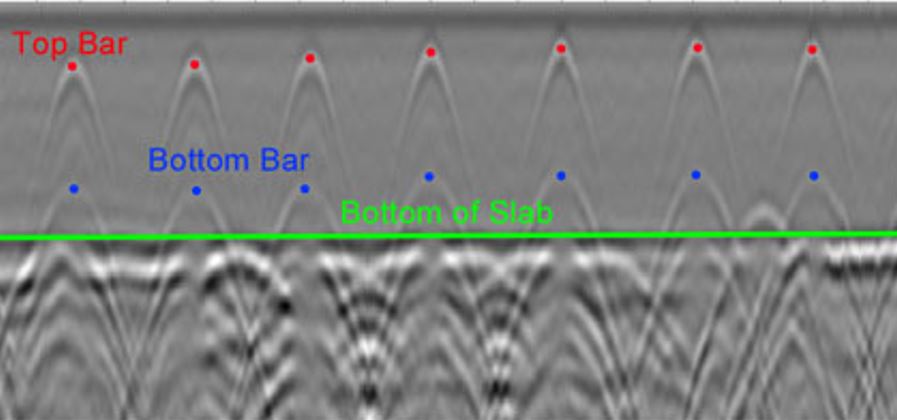
A handheld, portable, or mini Ground Penetrating Radar (GPR) scanner is a versatile device that employs electromagnetic waves to penetrate various materials, including soil, concrete, and asphalt.
These compact devices allow you to assess subsurface conditions swiftly and efficiently. But what can they detect?
What Can They Detect?
Handheld GPR scanners and concrete GPR scanners are powerful tools designed to detect various objects and anomalies beneath surfaces, with distinct applications.
Handheld GPR Scanners:
- Utilities: Handheld GPR scanners are vital for identifying underground utilities like water pipes, gas lines, and electrical conduits. This helps prevent costly accidents during demolition, excavation, or drilling.
- Archaeological Discoveries: They are used by archaeologists to uncover hidden artifacts and historical features.
- Infrastructure Inspection: Handheld GPR scanners can evaluate the condition of roads, bridges, and buildings by detecting voids, cracks, and structural issues.
- Environmental Studies: These scanners aid in assessing soil properties and mapping geological features for environmental purposes.
Concrete GPR Scanners:
- Rebar: Concrete GPR scanners are effective at locating reinforcement bars (rebar) within concrete structures to avoid damage during construction or renovation.
- Post-Tension Cables: They can identify post-tension cables crucial for structural integrity in post-tensioned concrete structures.
- Void and Delamination Detection: Detecting voids, air pockets, and delamination’s in concrete indicates potential structural defects or areas vulnerable to deterioration.
- Cracks and Fractures: These scanners identify cracks, fractures, and damage within concrete, aiding in structural assessment and repair planning.
- Thickness of Concrete: GPR measures concrete thickness, helping assess structural integrity and estimating concrete lifespan.
- Utilities and Embedded Objects: They locate utilities, conduits, and objects within or beneath concrete, preventing accidental damage during construction or excavation.
- Concrete Cover Depth: Determining the depth of concrete cover over rebar is critical for assessing structural integrity and corrosion risk.
- Corrosion Mapping: GPR assesses and maps areas of potential corrosion within concrete, vital for long-term maintenance and durability.
- Bonded Materials: GPR identifies bonded or layered materials in concrete, such as overlays or repairs, helping assess their quality.
- Slab Thickness Variation: In concrete slab applications, GPR reveals variations in slab thickness, vital for determining load-bearing capacity and evenness.
- Aggregate Size and Distribution: GPR provides information on aggregate size and distribution within the concrete mix, aiding in quality control and performance assessment.
In summary, handheld and concrete GPR scanners are versatile, non-destructive tools used in diverse industries.
They can detect a wide range of features and anomalies beneath surfaces, enhancing safety and efficiency in construction, archaeology, and maintenance projects.
It’s important to note that GPR cannot penetrate metal, so surfaces with metal components may not be suitable for scanning in most cases.
How to Select a Handheld GPR Scanner?
Choosing the right handheld GPR scanner is crucial for successful projects. Here’s how to make the best choice:
- Frequency: Different frequencies are suited for different depths and materials. Consider your specific needs. The scans typically range between 200mm-400mm deep.
- Size: If you are drilling near walls within 300mm, a smaller model or attachment is your best option.
- Battery Life: Ensure the device has enough battery life for your projects.
- Data Interpretation: Familiarize yourself with the software used for data analysis.
- Portability: If you require a truly portable solution, opt for lightweight and compact devices.
- Budget: Set a budget and stick to it, while also considering long-term value.
Types of Handheld GPR Scanners
There are various types of handheld GPR scanners available, including:
- Mini GPR Scanners: Compact and lightweight, ideal for quick inspections and clearance.
- Concrete Scanners: Specialized for assessing concrete structures.
- Wall Scanners: Good for basic detecting in medium to thin concrete slabs.
- Precise Trainspointer Scanners: Entry and Exit point only, Good for drilling.
- Stud Detector: Only used for thin fibro walls, Basic Metal Detector.
This blog post will focus on concrete and utility scanners, the trainspointers and stud finders are usually not practical for purpose of professional utility locating.
How Much Do They Cost?
The cost of handheld GPR scanners can vary widely depending on factors such as frequency range, depth of penetration, and additional features.
Low end device typically costs about $10,000.
High end latest technology can range from $20,000 all the way to $50,000.
Best Handheld GPR Scanner Product Reviews
To help you make an informed decision, we’ve compiled a list of the best handheld GPR scanners on the market, complete with in-depth reviews.
GSSI Mini LT.
The best for utility locating and has the most capability for almost every situation are.
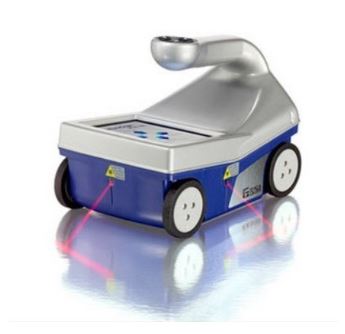
PROS: cheap, light, easy operation for quick clearance scans.
Cons: Takes long time to repair.
Battery and Fan faults after extended use. (Heat and 8hr+)
Cost: $12,000~
GSSI Mini XT.
The Mini XT is ideal for concrete inspection and evaluation. Easily and accurately locate the position and depth of metallic and non-metallic objects in concrete structures, including rebar, conduit, post-tension cables, pan decking, voids and service utilities.
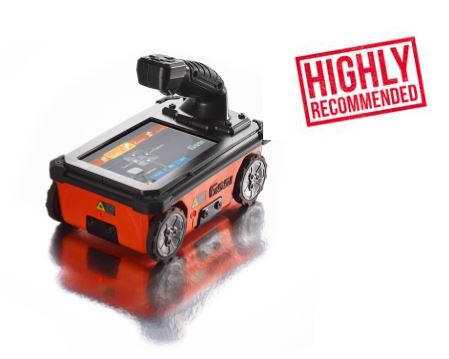
PROS: Best by far for utility scanners and detailed concrete slab reports.
-Has power/Passive mode locator attachment
CONS: expensive, takes along time to repair
Cost: $30,000~
MAX DEPTH: 60 cm (24 in)
ACCESSORIES: Palm XT, LineTrac XT, Carry Harness, Accessory pole.
Proceq GP8000.
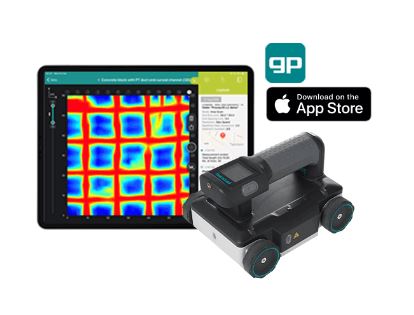
PROS: Software with easy dielectric and settings adjustments
CONS: Need APPLE IPAD for operation, Ongoing Price, Unreliable connection issues.
Cost: $14,000 +$5,000 per year~
Proceq GP8800.
Great for tight corners, curved or round pillars and edge scanning.
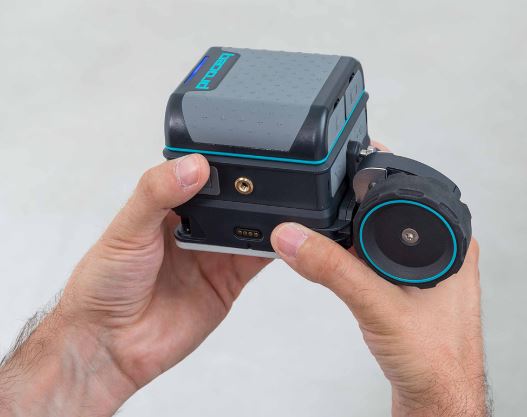
PROS: 0cm Clearance with 650mm depth
CONS: Need APPLE IPAD for operation, Ongoing Price, Unreliable connection issues.
Cost: $15,000~
IDS C-Thrue.
C-thrue is an all-in-one Ground Penetrating Radar (GPR) for accurate scanning and real time analysis of concrete structures. Construction and service companies as well as civil and structural engineers can now improve the way they locate rebars, voids, post-tension cables, cavities, conduits, and any other objects buried in the structure before cutting or drilling into the concrete.

PROS: Easy to use. Good for rebar and metal Object avoidance and general concrete investigations and clearance scans.
CONS: heavy and larger then most Handheld gps units, Not good in corners or tight spaces.
Cost: $10,000~
Hilti – PS 1000 X-SCAN CONCRETE SCANNER.
Locating rebars, tendons, metal and plastic conduits, glass-fibre cables, voids and wood in dry concrete structures at depths of up to 300 mm.
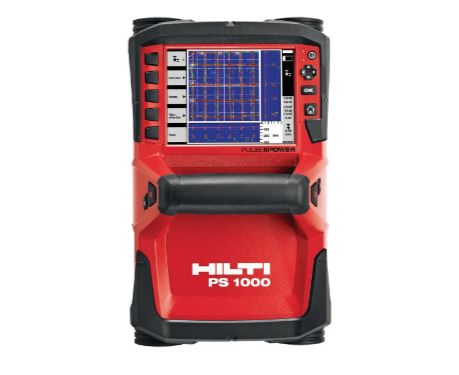
PROS: Easy to use. Good for rebar and metal Object avoidance. price
CONS: Highest upfront cost.
Cost: $50,000~
Displays a top view and cross sections of the scan in 2D and 3D for easy object mapping and multilayer identification
Applications:
- Locating rebars, tendons, metal and plastic conduits, glass-fibre cables, voids and wood in dry concrete structures at depths of up to 300 mm
- Minimizing hitting concealed objects when drilling anchor holes or through holes, breaking out openings and in diamond coring and sawing work
- Rebar extension (post-installed rebar connections) in structural applications
- Inspection of floors, decks, slabs, balconies, etc. in structures such as tunnels, bridges and buildings
- Detection of voids and cavities
Hilti – PS 85 WALL SCANNER.
Easy-to-use wall scanner and stud finder for hit prevention when drilling or cutting near embedded objects.

PROS: Max. detection depth for object localization: 200 mm
Accuracy: 5 to 10 mm (+/-) mm
CONS: Minimum distance between two neighboring objects: 40 mm
Cost: $2100~
Hilti – PS 300 FERROSCAN SYSTEM.
Concrete detector for rebar localization, depth measurement and size estimation in structural analysis.

PROS: Max. detection depth for object localization: 200 mm
Localization accuracy: 1% +/-3mm mm
CONS: Minimum distance between two neighboring objects: 30 mm
Cost: $26,000~
MALA – CX CONCRETE SCANNER.
The CX system was the world’s first to combine GPR with the more common Electro-Magnetic (EM) technology by way of a fully integrated 50/60 Hz sensor.
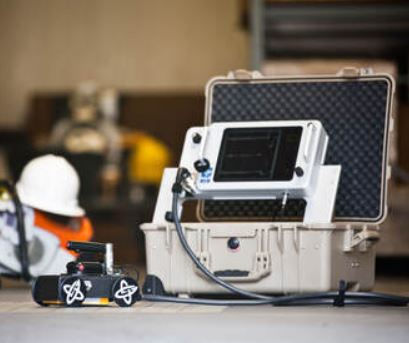
PROS: Full data retention for post-processing or on-site data review. Screen-shot function for verification and simple reporting.
CONS: Heavy/Bulky unit.
Cost: $25,000~
Where to Buy a Concrete Scanner?
Finding a reliable reseller or vendor is essential. We’ll provide you with tips on where to purchase handheld GPR scanners, whether you’re in Australia, Sydney, or anywhere else.
Buying from a trusted company and brand with support. There are alot of scam websites offering cheap gpr units. Getting good training and Customer Support is essential when buying a GPR.
Repair times. Repairing some brands can take a day, upto a week or sometimes several months.
Ongoing software costs. For example, Proseq GPRs has a model of charging 50%~ upfront for the hardware and has a yearly recurring software payment of a upto a few thousand dollars~.
Quality. The quality usually reflects the price but can very brand to brand.
Caution buying overseas direct from manufactures or sellers, Preset languages, poor support and shipping times are some of the problems when buying internationally.
Here are some alternatives for refurb or secondhand options. Facebook Marketplace, eBay, Utility Locating Associations, Businesses for sale.
Where not to buy. Remember, If a deal is to good to be true, it probably is.
Conclusion.
Handheld GPR scanners are powerful tools that can unveil the secrets hidden beneath the Earth’s surface.
Whether you’re an archaeologist, a construction professional, or a treasure hunter, understanding their capabilities and how to choose the right one is essential.
We hope this guide has shed light on the world of portable GPR scanners, helping you make informed decisions and embark on exciting underground adventures.
Keyword Tags:
What is a handheld/portable/Mini Gpr Scanner?, What can they detect?, How to select a handheld gpr scanner, Types of handheld gpr scanner, How much do they cost?, Best handheld GPR scanner Product Reviews, How much do they cost?. Where to buy?, Buying refurb or used?, ground penetrating radar, ground penetrating radar equipment reviews, handheld gpr, handheld gpr scanner, Handheld gpr scanner price, Handheld gpr scanner for sale, Handheld gpr scanner australia, Diy handheld gpr scanner,
Best handheld gpr scanner, gpr scanner price, best gpr scanner, portable ground penetrating radar for sale, StructureScan Mini XT price, Best handheld gpr scanner price, best gpr scanner, gpr scanning tool, used ground penetrating radar for sale, concrete scanner for sale, hilti rebar scanner price, mini gpr, concrete gpr scanning, gpr for utility location, gpr utility locating.
